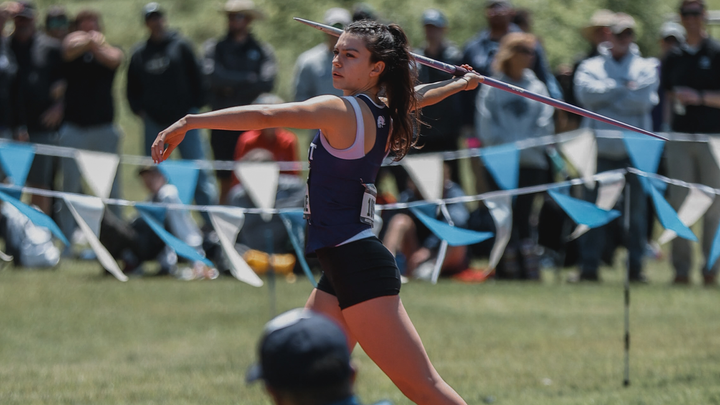A New Perspective on Arts and Humanities Careers: A First-Year’s AHA Experience
Abby Simon ’27 reminisces about the Arts and Humanities in Action program, a Loeb Center program designed to show a select group of first-years the potential career paths following an education in arts and humanities.
“And what are you gonna do with a degree in that?” This past J-Term, a select group of first-years explored this question that nearly every English, art history, and sociology major dreads hearing at family holidays. Arts and Humanities in Action (AHA) is a program led by the Loeb Center’s Director of Careers in Arts and Communication, Carla Costa, and William Nelson Cromwell Professor of Jurisprudence and Political Science Austin Sarat. The program consisted of interactive skill-building workshops, faculty and alumni mentor sessions, and discussion and reflection activities, with a day-long career trek to Boston to meet with Amherst arts and humanities alumni. I was fortunate enough to be a part of this year’s cohort of AHA fellows, and I finally feel I can answer everyone’s favorite age-old question.
One of my favorite alumni examples was Ike Zhang ’16, a talent agent and executive at United Talent Agency in Los Angeles. A double major in Asian languages and civilizations and chemistry at Amherst, Zhang shared his experience breaking into the entertainment industry after working as a management consultant after graduation. He took us through his path from Amherst to his work at EY-Parthenon and how he marketed his experiences in consulting to make himself an attractive candidate in an entirely new industry. Zhang especially emphasized the influence of Amherst and the alumni network in his journey, which I quickly found to be a common theme when talking to Amherst alumni. Furthermore, he explained that the problem-solving and communication skills he acquired from his Asian languages and civilizations classes have aided him during his time in both consulting and entertainment.
Another highlight of the week was speaking to four alumni who work at the Conservation Law Foundation in Boston. We heard from Amherst alumni at four different stages of their career in one office, from the President and CEO of the firm to a freshly graduated paralegal applying to law schools. Before AHA, I had always considered being a lawyer a linear career path. However, the alumni at CLF talked about the vastly different lifestyles that come with working for a nonprofit versus a corporate law firm. The part of the panel that resonated with me the most was hearing from people using their Amherst education to advocate for a cause they are passionate about, directly creating change in environmental policy.
Throughout the week, we also had the chance to meet with various faculty mentors. During these mentor sessions, Sarat; Professor of Music Jeffers Engelhardt; Assistant Professor of History and Sexuality, Women’s and Gender Studies Christine Peralta; and Professor of Russian Michael M. Kunichika each shared their unique journeys and how they ended up at Amherst. Professors Sarat and Kunichika taught us the lesson of “failing well” and the importance of utilizing rejection as a tool for self-improvement. It was reassuring to hear that even brilliant and successful people sometimes face rejection and defeat, especially in a place like Amherst, where it can be difficult to avoid falling into the trap of imposter syndrome. Whether trying to become “rich, greedy, and mean,” as Sarat would say, or going into something less lucrative and entirely humanitarian, AHA taught me that it’s not the obstacles you face that determine your success but how you learn from them.
Another main focus of AHA was an introduction to networking. Coming into Amherst, I have heard the term “networking” thrown around since orientation week. However, the thought of sending cold emails to people I didn’t know and attending awkward mixers made me nauseous. AHA broke down what networking actually means as an undergraduate student, and I am happy to report that it is much less intimidating than the image I had pictured. After personally taking advantage of it themselves, all the alumni we met praised the alumni network. Moreover, they showed great enthusiasm toward paying it forward to help the next generation of Amherst students. We also learned how to use fundamental tools like the alumni directory and LinkedIn to find people and how to get the conversation started when reaching out to an alum.
On Friday, the program concluded with a next steps session about the internship search and application process, followed by a program reflection with Sarat. Thinking back on the past week, I feel most fortunate to have shared this experience with a cohort of 14 other first-years I can now proudly call my friends. AHA challenged me to think beyond the typical linear career progression of graduating and either entering investment banking or going straight to graduate school. For the first time, I am starting this semester with more enthusiasm than anxiety over declaring my major as LJST, anthropology, or SWAGS. Ultimately, AHA took my fear and dread of post-graduation life and turned it into excitement. For that, AHA holds a special place in my heart.





Comments ()